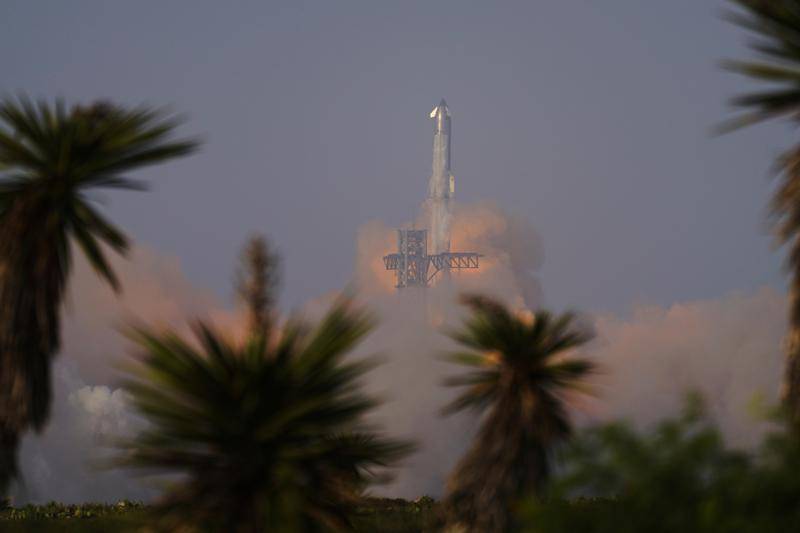Starship's Ninth Test Flight Ends in Mid-Air Disintegration Over Indian Ocean
On May 27, 2025, SpaceX's ambitious Starship program faced another setback as its ninth test flight ended in failure. The spacecraft, designed for future missions to the Moon and Mars, disintegrated over the Indian Ocean during re-entry, marking the third consecutive failure this year.
The Starship, comprising the Super Heavy booster (B14-2) and the upper-stage spacecraft (Ship 35), lifted off from SpaceX's Starbase facility in Texas at 6:36 p.m. CDT. This flight was notable for being the first to reuse a Super Heavy booster, a significant step towards SpaceX's goal of creating a fully reusable launch system.
The initial phase of the flight proceeded smoothly, with successful stage separation and the upper stage reaching orbital velocity. This marked an improvement over previous flights, where earlier failures occurred during ascent.
The mission aimed to deploy eight Starlink mass simulator satellites and test the spacecraft's thermal protection system during re-entry. However, the payload deployment failed due to a malfunctioning door that remained shut. Additionally, a propellant leak led to a loss of attitude control, causing the spacecraft to tumble and ultimately disintegrate during re-entry over the Indian Ocean.
The Super Heavy booster also faced challenges during its descent. It attempted a more aggressive landing maneuver than in previous tests but was destroyed during the landing burn over the Gulf of Mexico.
Despite the failure, the flight provided valuable data. SpaceX noted that the thermal protection tiles on the Starship remained intact during ascent, indicating progress in heat shield design. However, the loss of tank pressure during the coast phase and re-entry contributed to the vehicle's instability.
The company also highlighted the importance of these test flights in refining the spacecraft's design and performance. Each flight, even those ending in failure, offers insights that drive improvements in future iterations.
The Federal Aviation Administration (FAA) had approved this test flight, expanding safety zones to accommodate the mission's objectives. Following the failure, SpaceX is expected to conduct a thorough investigation to identify the root causes and implement necessary corrections.
CEO Elon Musk remains optimistic, viewing the test as a step forward despite the outcome. He emphasized the importance of frequent testing, stating that SpaceX aims to increase the launch cadence to one every three to four weeks.
The Starship program is central to SpaceX's vision of enabling human colonization of the Moon and Mars. NASA is also relying on Starship for its Artemis mission, which aims to land astronauts on the Moon by 2027. While the recent failures underscore the challenges of developing advanced spaceflight technology, they also highlight the iterative nature of engineering progress.
As SpaceX continues to refine Starship, each test flight brings the company closer to achieving its ambitious goals. The data gathered from these missions will inform future designs, ultimately contributing to the development of a reliable, reusable spacecraft capable of interplanetary travel.
In conclusion, while the ninth test flight ended in failure, it represents another step in the iterative process of innovation. SpaceX's commitment to learning from each test ensures that the Starship program will continue to evolve, bringing humanity closer to a future where space travel is more accessible and sustainable.


